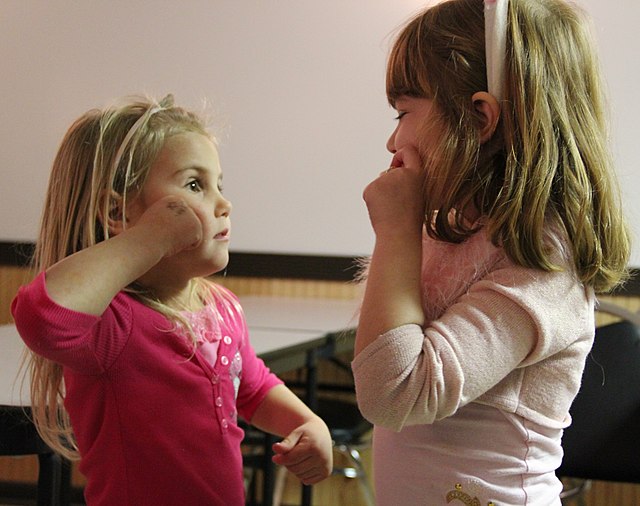Sign languages are languages that use the visual-manual modality to convey meaning, instead of spoken words. Sign languages are expressed through manual articulation in combination with non-manual markers. Sign languages are full-fledged natural languages with their own grammar and lexicon. Sign languages are not universal and are usually not mutually intelligible, although there are also similarities among different sign languages.
Two men and a woman signing American Sign Language (2008)
Juan Pablo Bonet, Reducción de las letras y arte para enseñar a hablar a los mudos ("Reduction of letters and art for teaching mute people to speak") (Madrid, 1620)
Chirogram from Chirologia, 1644
Sign language relief sculpture on a stone wall: "Life is beautiful, be happy and love each other", by Czech sculptor Zuzana Čížková on Holečkova Street in Prague-Smíchov, by a school for the deaf
Language is a structured system of communication that consists of grammar and vocabulary. It is the primary means by which humans convey meaning, both in spoken and written forms, and may also be conveyed through sign languages. Human language is characterized by its cultural and historical diversity, with significant variations observed between cultures and across time. Human languages possess the properties of productivity and displacement, which enable the creation of an infinite number of sentences, and the ability to refer to objects, events, and ideas that are not immediately present in the discourse. The use of human language relies on social convention and is acquired through learning.
A mural in Teotihuacan, Mexico (c. 2nd century) depicting a person emitting a speech scroll from his mouth, symbolizing speech
Cuneiform is the first known form of written language, but spoken language predates writing by at least many tens of thousands of years.
Children of deaf adults using American Sign Language
Braille, a tactile writing system








